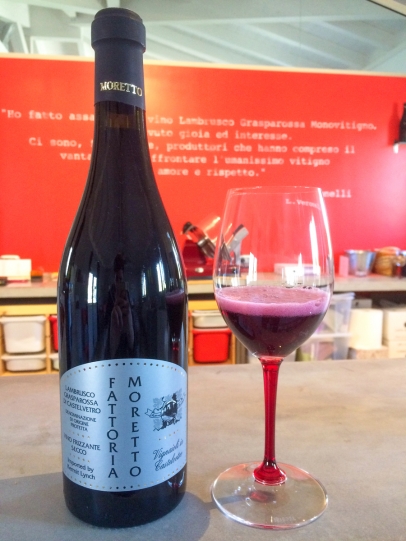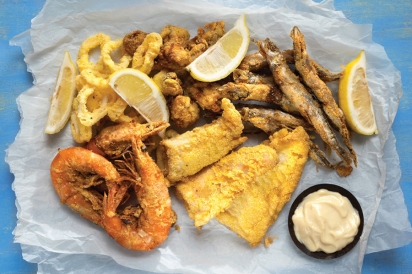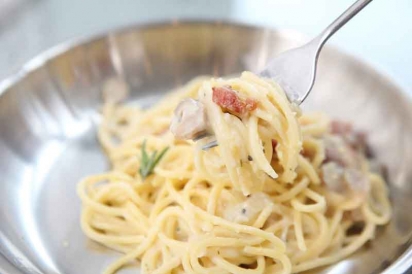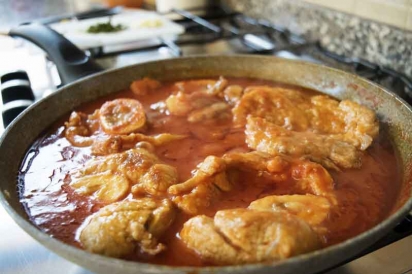La Dolce Vita: Jeffrey’s 5 for 5
When people ask what’s my favorite wine in the world, it’s like asking me which of my kids do I love more. But here, my heart beats to Vivaldi, Puccini and all things white, red and bubbles from the boot. Here are five definitive Italian dishes and five wines to guzzle them with.
Spaghetti and Meatballs
This dish started with Italian émigrés coming to America in 1880s. The majority of immigrants were poor and back in Italy had been spending most of their salaries on food. When they came to the U.S., only a quarter of their earnings went to food, so families could afford to put more meatballs on the table. In the village of Cerbaia in the Chianti Classico region of Tuscany lies the little estate Montesecondo, where the owner, Silvio, ferments Sangiovese with only native yeasts and does macerations and aging in a variety of vessels (concrete, barrels, amphorae, but no new oak). The emphasis here is on grape and place, best expressed in his opinion through minimal – but careful – intervention. “Tin,” which means clay in Arabic, is an homage to Silvio’s North African heritage, and is fermented and aged in clay amphora. High acid, the focused red berry aromas and the dark crimson color immediately draw you in and lead you into the soft tannins and red fruit flavor.
Silvio Messana Montesecondo Tin 2015
Fritto Misto
Translated as “mixed fry,” this encompasses all sorts of fried foods: innards, such as sweetbreads; meats, vegetables and shellfish. In Venice the term almost always applies to the city’s well-known frutti di mare: impeccably fresh fish and seafood from the Adriatic Sea that accepts the crispiness of the fry with the lightness of a feather. Here, Vermentino reigns supreme. It originates in three regions: Liguria, Sardinia and Tuscany, all plantings very close to the sea in each.
Mura Vermentino di Gallura 2017
Carbonara
Defined as “in the manner of coal miners,” carbonara sauce may have originated in a Roman restaurant of the same name. Other believe the black pepper specks look like coal powder atop the pale hues of egg, cheese and pasta. Still others say this dish was made for the Carbonari, a network of secret revolutionary societies in Italy in the early 1800s. For this dish, a volcanic grape makes the most sense.
Occhipinti Frappato 2017
Lasagne
These wide, flat noodles, filled with sauce or cheese, then baked in sheets in the oven, come from the region of Emilia-Romagna, where it went from a poor man’s food to a rich meal filled with ragù, or meat sauce. Traditionally, lasagne wasn’t made with tomatoes, only ragù, béchamel sauce and cheese, usually mozzarella or Parmigiano Reggiano, or a combination of the two. Even today, only a bit of tomato or tomato sauce is used in a traditional ragù, unlike most Italian-American dishes, which are often swimming in tomato sauce. One does not need to leave the region to find the perfect accompaniment. Lambrusco is a love letter from Emilia-Romagna, and Moretto is not the sweet red fizz that became Italy’s most exported wine in the decades after the 1970s. It’s the good stuff: dry, not-quite-sparkling but fizzy, easy-drinking wine crafted from select grapes from the southern outskirts of Modena. It is a window into Emilia-Romagna’s traditions: Italy’s fastest cars, fantastic food and its most misunderstood wines. Lambrusco Grasparossa di Castelvetro is produced only in Castelvetro, a hilly region south of Modena. The Grasparossa tends to be the fullest and the darkest embodiment of the wine. It opens with subtle scents of herbs and spices, signaling that this wine is about more than just fruit. Notes of smoked meat add savor to the blackberry and plum flavors, while tangy acidity intertwines with the fine bubbles, knitting the flavors together.
Fattoria Moretto Lambrusco Grasparossa de Castelvetro 2018
Osso Buco
The rich and filling Osso Buco alla Milanese is worshipped in the cooler months here in the 305. Back leg of veal, cut into slices across the bone (called ossobuchi), would have been affordable only on special occasions by most Milanese families. The essential secret of the dish is patience and simplicity. Nebbiolo, the statesman grape of the Piedmont (yeah, the one that makes Barolo and Barbaresco) is the king for this dish.
Barolos from the Bussia vineyard tend to have deep color and rich fruit. While they don’t lack the classic tannic structure of Nebbiolo from this part of the world, they are not nearly so hard as the Barolos from the south side of Monforte or from Serralunga, which makes for perfect food pairings for bolder dishes. The Fantinos are also blessed with some of the oldest vines in the entire Barolo zone and they produce grapes that would be the envy of any Barolista.
Fantino Cascina Dardi Barolo Bussia VV 2013








